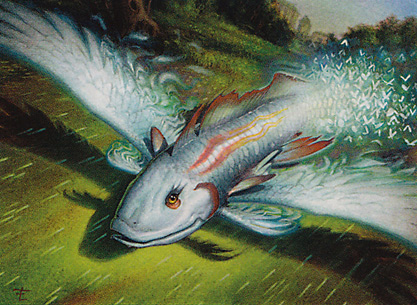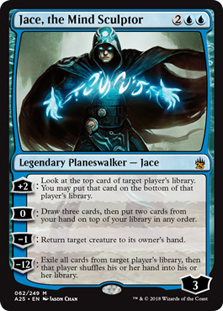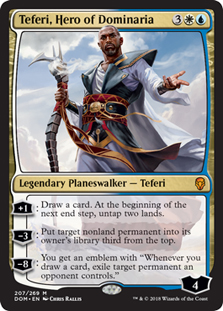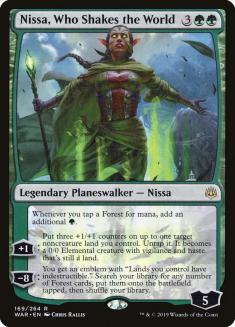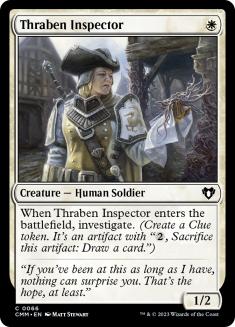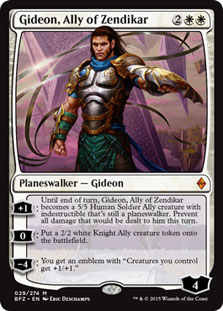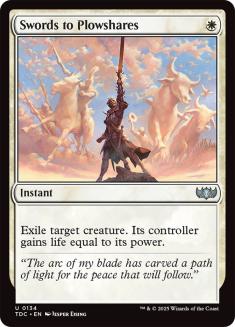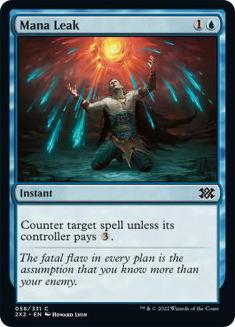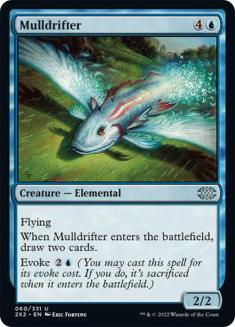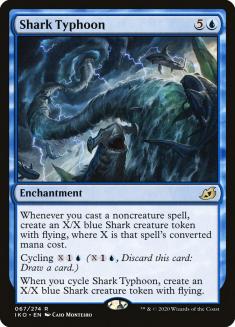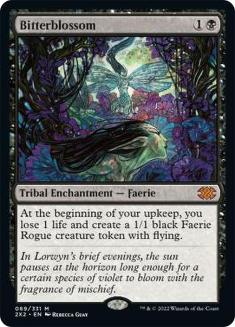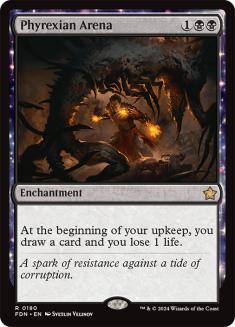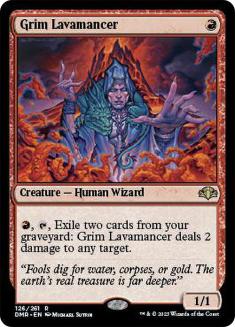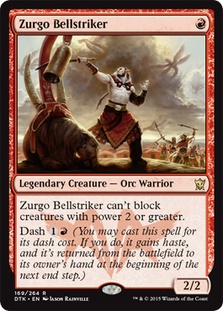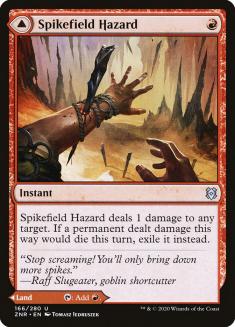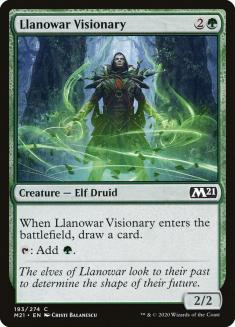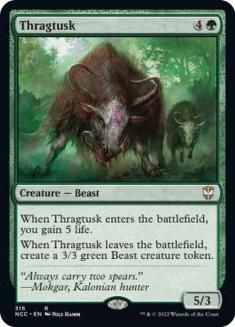Organizing Magic players is often compared to herding cats. If you’ve ever been involved in running events you’ve likely heard this comparison, and you have definitely experienced it. This experience carries forward to anybody who has ever tried to organize a Cube night. You realistically have to invite more than eight people, and there’s no great way to predict how many players will actually show up.
As such, Cubes designed for eight players tend to be drafted with six more often than we might like. Sadder still is the four-person draft. And, if you’re anything like me, you’ve had many an attempt at a Cube night end up as a two-person affair.
Eight-player Cubes generally hold up reasonably well for drafting with six players, but four-player drafts are always rough, and while there are a couple of two-player draft styles that I enjoy, it’s undeniable that there are some scaling issues when a Cube designed for eight is drafted by two. The issue is similar to something that I discussed in my article on Cube size, where you’ll see half-synergies and won’t necessarily be able to leverage a lot of the cards that you see in the draft. Beyond that, my experience drafting eight-player Cubes with two players tends to lead to players drafting good-stuff decks with as many colors as possible, and successfully drafting aggressive decks is nearly impossible.
I’ve likely done hundreds of two-player drafts with my close friend and business partner Mike Hawthorne, who has egged me on for years to design a Cube for two-player drafts. Despite being pretty medium on two-player drafts, I never felt terribly compelled to refine the experience. It’s not perfect, but doing a couple of Grid Drafts is a fine way to spend a Saturday. The ongoing pandemic is ultimately what led me to work on designing a two-player Cube, given that I really don’t know when the next time I’ll want to regularly try to wrangle seven other Magic players will be.
This project is only a few months old at this point, but I’ve gotten in a few dozen drafts and shared the list with some friends who have gotten in a number of drafts of their own as well, and from my experience and their feedback I’ve come up with a list for a Cube that plays two to four players that I’m very happy with. This is the list and these are my expanded thoughts on it:
Cube Size
I mentioned earlier that four-player drafts with eight-player Cubes are pretty bad, and this design is intended to solve that problem, too. With eight players you draft three fifteen-card packs, which means there are 45-cards in the draft per player. Four-player drafts tend to be done using five nine-card packs, which works out to be 180 cards. I heavily bias towards eight-player Cubes being 360 cards, so a four-player design with exactly enough cards for four players just made sense to me. Drafting all the cards gives players a lot of agency in four-player drafts, and the extra cards add some needed variance for the two-player environment.
It’s a small thing, but I’ve really enjoyed how little comparative effort it takes to shuffle a 180-card Cube as compared to any Cube designed for eight players. It takes way less shuffling to ensure a good distribution, so it’s really easy to reset and draft again when you’re done playing.
Technical Vision
My goal is for the gameplay to be largely about attrition. Two-player Draft formats tend to involve both players having a very good idea of what the other player has drafted and will be playing, and as such I want the possible decks the Cube can generate to largely be about the same thing. When you’re only playing one match with a Draft deck, you really want to do everything you can to make it to feel like both players are playing the same game. The cleanest way to do this is a good old-fashioned focus on creature combat, with some planeswalkers and swingy effects peppered in to taste.
A big thing for my enjoyment was to make sure that the aggressive decks were good. I love giving the beatdowns, and the weakness of aggressive decks when drafting eight-player Cubes with two players was always my least favorite part. My hope was that a Cube where all of the creatures are just inherently good rates designed with the Cube’s mana curve in mind would facilitate good aggressive decks, and I’m happy to say that this has proven true.
I’m confident at this point that a Cube following the same size parameters as the one I designed could support all kinds of different gameplay, but this design was something of a proof of concept, so I kept things to the core tenets of Magic. As long as the Cube is focused around a specific thing, 180 cards is a great size for drafting two to four decks of whatever theme you like.
Aesthetic Vision
This Cube is really mechanically driven, so there’s not a ton going on in terms of aesthetics. The one goal I had in mind here is that I want players to be excited about the prospect of playing every card in every pack. This meant aiming for a high-ish power level with a narrow power band, which the smaller Cube size does a great job of facilitating.
I was initially concerned about including cards like Jace, the Mind Sculptor and Teferi, Hero of Dominaria, but the play experience has been better to this point than I ever would have guessed. The lean mana curve of the Cube allows players to heavily pressure planeswalkers, so while these are still very exciting cards to see in a pack, they have proven manageable in games.
Color Breakdown
In addition to supporting aggressive decks, I also really didn’t want players to be able to consistently draft four- or five-color good-stuff decks with this Cube. As such, the mana fixing is mostly kept to two-color lands, with the lands included being largely skewed towards lands that support aggressive decks. Including Watery Grave over Underground Sea is definitely easy on the wallet, though the motivation for me has more to do with making all of the two-color lands come at some sort of cost. The general dearth of artifacts in conjunction with large volumes of cards with heavy color requirements and aggressive creatures also serve this end.
Each color very deliberately has exactly 23 monocolored cards, and is set up so that if you added seventeen basics to the monocolored selection of any color you’d have a pretty reasonable and coherent deck. With only five artifacts in the Cube, you’re pretty unlikely to actually end up drafting a monocolored deck, but it’s sort of an Easter egg in the Cube that I find very charming. This won’t realistically come up in a two-player draft but it’s very much possible when drafting with four.
Thinking of each color as a monocolored deck did a lot to help me drive the play experience and is something that I’ll put to use when I work on future 180-card Cubes. Ensuring that all of the cards of a given color work reasonably well together goes a long way in making all of the colors equally attractive to draft and also helps to avoid pitfalls in the construction of the Cube’s mana curve. A lot of Cube drafts get derailed when you see too many six-mana cards and not enough stuff that costs one or two, but that’s never going to be the case with this design.
Now let’s talk about how each of the individual colors are implemented.
White
The white column is going to look very familiar if you’ve ever drafted any of the regular Magic Online Cubes. White gets very few broken cards, so we’ve all seen white working to compete with pretty close to this exact spread of creatures and planeswalkers across all formats.
The major thing to note with regard to white is the absence of Wrath of God. I had it and a few more sweepers in my initial design, but I found that there were actually very few situations where I wanted a sweeper given the creature-heavy composition of the Cube. There are games where I fall behind and I want a sweeper, but that point is somewhat irrelevant given that I wouldn’t play that sweeper in most of my decks.
Supreme Verdict ended up staying given that the setup for Azorius is pretty plainly a control deck, and I like having some more controlling options and some variance of play experience in the Cube. The nonblue white decks are just far less interested in that sort of thing.
I had Mother of Runes in my initial design when I had a few more sweepers, but I downgraded it to Giver of Runes now that the gameplay has become even more focused on one-for-one exchanges, which is an environment where Mother of Runes is as unfun as it is powerful.
Blue
I was initially worried that blue might be the best color in the Cube. Blue is always threatening to be the best color in every Cube. There are some incredibly powerful cards in this section, though in my experience this has been beneficial to my goal of making every pack exciting and the gameplay has actually been back-and-forth and compelling.
The blue column is mostly my favorite blue cards to play with in Cube that don’t immediately win the game. I strongly believe that Cryptic Command would be a bridge too far, and I cut Venser, Shaper Savant from my initial list for being truly miserable to play against, but what’s left strikes a good balance of fun and powerful for me. There are a lot of powerful answers, but the low mana curve forces you to have the right answers early and often if you’re trying to play a control game. The flash threats spread throughout the Cube also do a good job of giving other colors some interaction advantage against blue, which leaves blue powerful but manageable.
Black
The black column is largely cards that are good at answering creatures and planeswalkers, with some strong value cards and aggressive creatures peppered in. Black is often saddled with gimmicky synergies in larger Cubes, but here we’re able to actually keep it to individually powerful cards.
I’m generally big on Bitterblossom and Phyrexian Arena in Cube, but I especially like what they do in this environment. The life costs are real given how creature-heavy the Cube is, but these cards are really efficient options to play value games against the more controlling decks.
Black might be the color that benefits the most from the small Cube size given that the spread of black cards in a lot of Cubes end up being really disjointed. Black is often saddled with a lot of bad discard outlets and bad creatures that support niche archetypes, whereas here the black column here might just be the best ready-to-play deck among the colors if you shuffled it up with seventeen Swamps.
Red
The red column is something of a midrange pile, but red combines really well with black or white to make great aggressive decks. At the end of the day, the red midrange decks are pretty dang good, too.
While I’ve liked the feel of red aggressive decks in the Cube, I’m still working on the kinks on a couple of the cheap creature slots. My initial design had Monastery Swiftspear in as my pick for the most generically good red one-drop, but triggering prowess just isn’t the easiest thing in this environment. I considered subbing it out for Goblin Guide but there’s just too much blocking involved in the games for me to sign off on that. I’m currently of the belief that Zurgo Bellstriker is the best one-drop to stand alongside Grim Lavamancer, who has been excellent.
I’ve been really big on the Zendikar Rising DFCs in this Cube, though the red lot has proven less exciting than other colors’. Shatterskull Smashing has been horrible for me every time I’ve drawn it in every environment, and I cut it here for Spikefield Hazard, which is just a better card. I’m fairly confident that there are enough targets that the Hazard will stay, but it’s untested in actual games at this point.
Green
My goal to prevent players from drafting five-color good-stuff decks is pretty loudly manifested in my design of the green column. The mana acceleration present largely only produces green mana, and most of it comes attached to fragile creatures. I don’t want to go so far as to deny green any acceleration, and I did give green some powerhouses in Llanowar Visionary and Nissa, Who Shakes the World that can be punishing to the “kill all the small creatures” strategy.
Green is generally more aggressive in this Cube than it is in other Cubes, which I think is an important part of the Cube’s balance. The worst cards for gameplay that I’ve tried in the Cube were things like Rampant Growth, as too much of that sort of thing makes the games stop being about attrition and start being about casting haymakers ahead of schedule. I kept some mana acceleration in and even offered Growth Spiral as a way for Simic decks to try to have runaway games, but for the most part the green decks are playing the same honest Magic as everyone else.
Drafting the Cube
Something that I realized pretty early on in drafting this Cube is that you can’t approach the two-player draft the same way you would with two players drafting a Cube designed for eight players. Seeing as all the cards are designed to be live in all of the games, you really need to draft fewer total cards to avoid the five-color soup problem.
A Grid Draft with fewer packs or a Winston Draft with fewer total cards does the trick, though I came up with a new two-player draft format that I’ve been enjoying that tries to more closely capture the feel of drafting a pack with more players. I’m not big on naming things, so for simplicity’s sake let’s call it Minneapolis Draft.
Minneapolis Draft is a two-player draft format where both players make eight packs of seven cards. Each player starts by simultaneously opening their first pack without showing the contents to the other player, drafting one card face down, and then trading their first pack with the other player. Then each player takes two cards from the other player’s pack and trades back. Finally, players take an additional two cards from the pack they had opened and the last two cards in each pack are discarded face-down from the draft. To reiterate, that’s one first pick, two picks from the other player’s pack, and then two last cards from the pack you opened before discarding the remaining two cards from the draft. Players continue this process until all eight of their packs have been drafted. From here players add any number of basic lands to their deck and play some 40-card Limited Magic.
I’ve found this to be a really fun way to draft with some amount of hidden information that also involves navigating drafting packs against the other player that emulates a traditional booster draft better than other two-player draft formats. This process could also be done face up, and I imagine some players would prefer that, though I’ve been enjoying the face down draft a lot and haven’t been interested in trying face up.
This Cube and this draft style have led to a lot of really fun games with two- and three-color decks, and I’m excited to play more with this Cube. It’s a great way to scratch the Cube itch in this era when Magic exists absent the gathering, and it’s one I expect to keep in my arsenal for those days when it’s safe to fire eight-player drafts again, but only two or four show up. I’m also excited to explore more varied play experiences with 180-card environments, and I can’t stress enough how much this size improves the two- and four-player experience.

